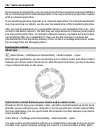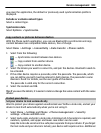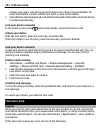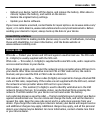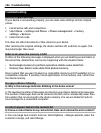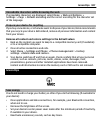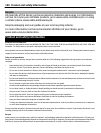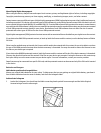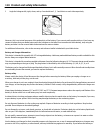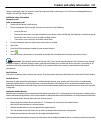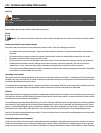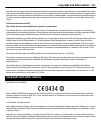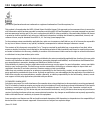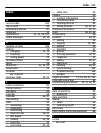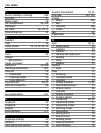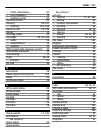
2 Angle the hologram left, right, down, and up. You should see 1, 2, 3 and 4 dots on each side respectively.
However, this is not a total assurance of the authenticity of the battery. If you cannot confirm authenticity or if you have any
reason to believe that your Nokia battery with the hologram on the label is not an authentic Nokia battery, stop using the
battery and take it to the nearest Nokia authorized service center or dealer.
For additional information, refer to the warranty and reference leaflet included with your Nokia device.
Battery and charger information
This device is intended for use with a BL-5CT rechargeable battery. Nokia may make additional battery models available for this
device. Always use original Nokia batteries.
This device is intended for use when supplied with power from the following chargers: AC-15. The exact charger model number
may vary depending on the type of plug. The plug variant is identified by one of the following: E, X, AR, U, A, C, K, or B.
The battery can be charged and discharged hundreds of times, but it will eventually wear out. When the talk and standby times
are noticeably shorter than normal, you need to replace the battery.
Battery safety
Always switch the device off and disconnect the charger before removing the battery. When you unplug a charger or an
accessory, hold and pull the plug, not the cord.
When your charger is not in use, unplug it from the electrical plug and the device. Do not leave a fully charged battery connected
to a charger, as overcharging may shorten the battery’s lifetime. If left unused, a fully charged battery will lose its charge over
time.
Always keep the battery between 15°C and 25°C (59°F and 77°F). Extreme temperatures reduce the capacity and lifetime of the
battery. A device with a hot or cold battery may not work temporarily.
Accidental short-circuiting can happen when a metallic object touches the metal strips on the battery, for example, if you carry
a spare battery in your pocket. Short-circuiting may damage the battery or the connecting object.
Do not dispose of batteries in a fire as they may explode. Dispose of batteries according to local regulations. Recycle when
possible. Do not dispose as household garbage.
Do not dismantle, cut, open, crush, bend, puncture, or shred cells or batteries. If a battery leaks, do not let battery liquid touch
skin or eyes. If this happens, immediately flush the affected areas with water, or seek medical help.
Do not modify, remanufacture, attempt to insert foreign objects into the battery, or immerse or expose it to water or other
liquids. Batteries may explode if damaged.
Use the battery and charger for their intended purposes only. Improper use, or use of unapproved batteries or chargers may
present a risk of fire, explosion, or other hazard, and may invalidate any approval or warranty. If you believe the battery or
110 Product and safety information



